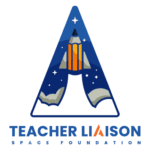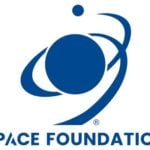Education
Space Education Teaches About Life on Earth
Written by: developer
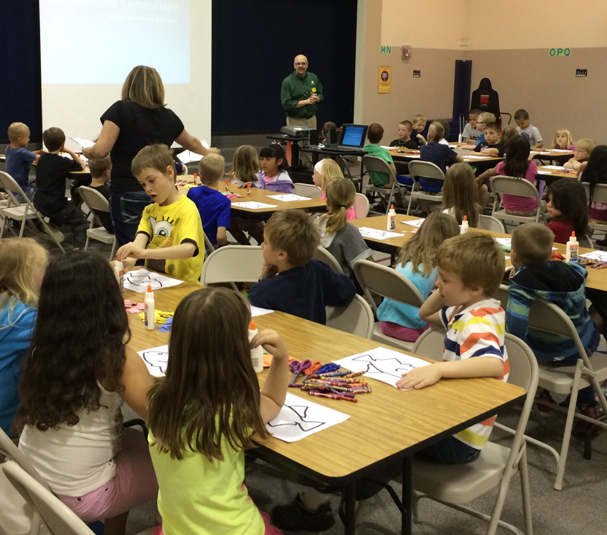 The Space Foundation education team spent two days at Flagstone Elementary School in the Douglas County (Colo.) School District in May, delivering STEM education activities to more than 1,200 students. The activities were designed to stimulate the students’ interest in STEM subjects – science, technology, engineering and mathematics.
The Space Foundation education team spent two days at Flagstone Elementary School in the Douglas County (Colo.) School District in May, delivering STEM education activities to more than 1,200 students. The activities were designed to stimulate the students’ interest in STEM subjects – science, technology, engineering and mathematics.
A full day was devoted to life science, with activities appropriate to each grade level and aligned to state standards. The 5th and 6th grade students learned about the neurovestibular system and how the brain perceives signals to know how the body is oriented. Understanding the neurovestibular system and how it behaves helps scientists understand why some astronauts experience “space sickness” when they enter microgravity. “Space sickness” is a kind of motion sickness that can be quite extreme for astronauts in space.
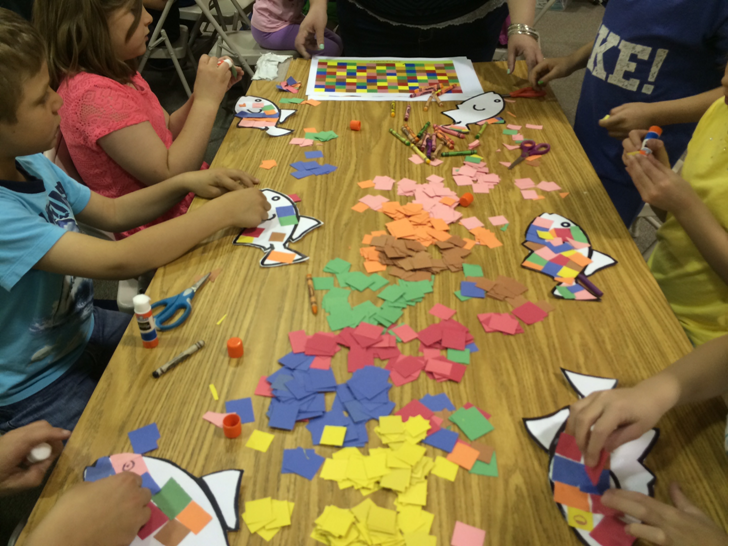 The 3rd and 4th grade students learned about a new NASA/JAXA mission called GPM, or the Global Precipitation Measurement mission. This mission will allow scientists for the first time to monitor all of the precipitation and fresh water on the planet every three hours. Students were also given a design challenge in which they had to design and build an instrument to measure precipitation.
The 3rd and 4th grade students learned about a new NASA/JAXA mission called GPM, or the Global Precipitation Measurement mission. This mission will allow scientists for the first time to monitor all of the precipitation and fresh water on the planet every three hours. Students were also given a design challenge in which they had to design and build an instrument to measure precipitation.
By studying water on Earth, we can better understand the water in our solar system. To that end, students participated in an activity about scale distances in the solar system. They also learned on which planets scientists have discovered water or water ice that might harbor life.
The 1st and 2nd grade students learned about animal adaptation and how some animals use camouflage to either hunt their prey or hide from predators. They also did some astronaut training to learn how simple things such as music can affect a person’s mood. This is important to scientists as we prepare for long-duration space missions to Mars.
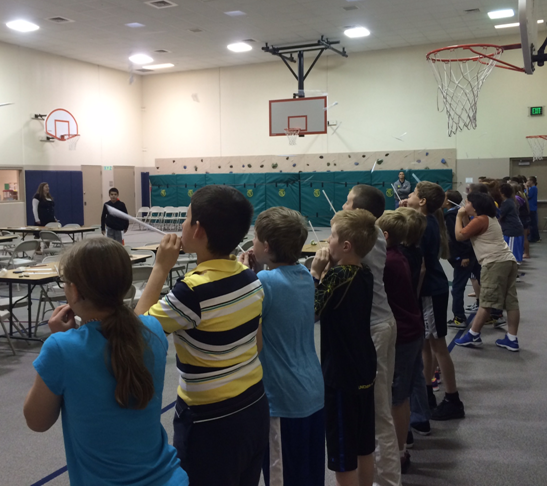 Another full day was devoted to physical science. Each grade level had the opportunity to design, build and launch different types of classroom rockets. They also learned about NASA’s plans to build the Space Launch System, or SLS, which will take humans to Mars in the 2030’s. A Colorado connection to this rocket is the Orion Multi-Purpose Crew Vehicle which is being built by Space Foundation corporate partner Lockheed Martin in its Waterton, Colo. facility.
Another full day was devoted to physical science. Each grade level had the opportunity to design, build and launch different types of classroom rockets. They also learned about NASA’s plans to build the Space Launch System, or SLS, which will take humans to Mars in the 2030’s. A Colorado connection to this rocket is the Orion Multi-Purpose Crew Vehicle which is being built by Space Foundation corporate partner Lockheed Martin in its Waterton, Colo. facility.
The STEM education program at Flagstaff was coordinated with Space Foundation Teacher Liaison Amy Robinson, who is a science teacher at Flagstone Elementary School.
Learn more about Space Foundation education programs and how to become a Teacher Liaison here.
This article is part of Space Watch: June 2014 (Volume: 13, Issue: 6).

